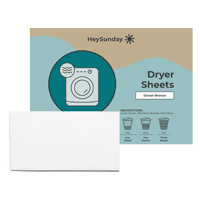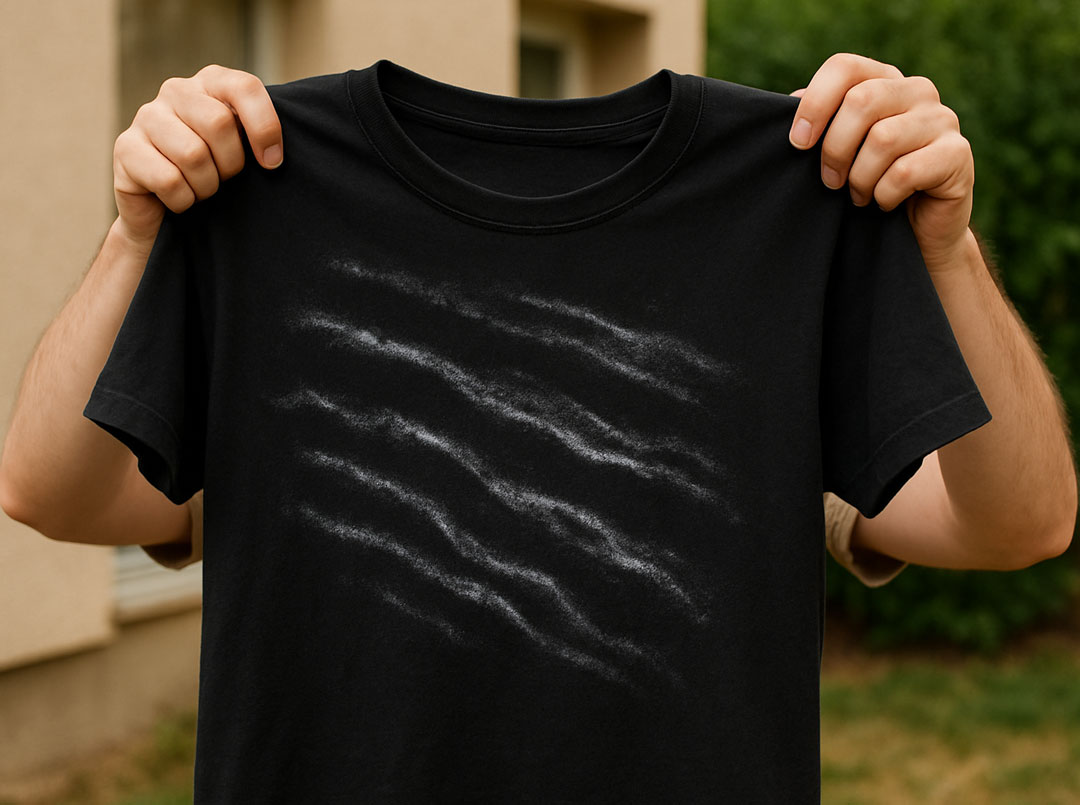
Eco-Savvy Savings: How Going Green Can Save You Thousands
In a time when environmental concerns are top-of-mind for many, we are learning that being eco-friendly has a more positive impact not only on the planet, but on our wallets, as well. As both individuals and businesses alike focus on sustainable practices, they are seeing financial savings—and those savings add up over time!
So just how much money can you save by being eco-friendly in your day-to-day life? From reducing energy consumption to ridding your home of single-use products, our researchers at HeySunday have broken it down to help you understand how making the switch to a sustainable lifestyle will benefit your bank account while reducing your carbon footprint.
Total Yearly Cost Savings
After analyzing costs, we found that the average American spends $13,894 on energy consumption, water use, vehicle ownership, and single-use products. By cutting down on energy and water consumption by just 10% each, taking public transportation instead of a personal vehicle, and replacing single-use home products with reusable alternatives, you can save more than $9,000 each year! Keep reading to find out how each of these costs contributes to the total yearly savings of being eco-friendly.

Cutting Energy Costs
Between lights, televisions, kitchen appliances, washers and dryers, and anything else you can plug into an outlet, energy use is at an all-time high. The average electric bill in the United States sits at $146 per month, which comes out to $1,752 each year. Reduce your electricity use by just 10%, and you can save $175 every year!

Ways to Cut Energy Costs
Cutting down on electricity doesn’t have to be difficult. Putting in a little more effort to do things like turn off the lights when they’re not in use, changing the thermostat by a degree or two, using cold water for doing laundry, and hanging clothes to dry instead of running the dryer can go a long way. With an extra-special effort, you might even be able to save more than 10% of your electricity and save even more of your hard-earned cash!
Here’s how much energy you can save each year with the following initiatives at home:
- Change the thermostat to be 10 degrees warmer or cooler than your normal temperature each season for eight hours a day. This will save you about 10% on your heating and cooling costs!
- Save up to 22% each year on your energy costs by lowering the temperature of your water heater from the default 140 degrees, down to 120 degrees (according to NerdWallet).
- Unplug devices when not in use to save between 5%-10% on your total energy bill. Electronics that are in standby (plugged in, but not in use) can use up to 10% of your home’s energy!
- Hang clothes to dry in place of using a dryer to save 71% of the energy you use doing laundry (according to CNBC).
Reducing Water Costs
American households spend around $73 per month on water, totaling $876 throughout the year. While water is something we need to survive and maintain proper hygiene, we certainly use a lot of it! You can easily reduce the amount of water you use by 10% and save yourself an additional $88 each year. While this may not seem like a large amount, over the course of five years, it means you’ll save more than $400.

Water Savings
Ways to Reduce Water Costs
Indoor plumbing is a luxury that many of us simply can’t live without—but we can use it a little bit less! We’ve all been told to “never let the water run” when we brush our teeth and wash our hands, which can save a little bit of water. If you want to significantly reduce your water use, try taking a shorter shower (spending just five minutes less in the shower can save over ten gallons of water!), running a full dishwasher instead of hand-washing dishes individually, using the washing machine only when you have a full load of laundry, and watering your lawn less frequently.
Saving on Vehicle Costs
Owning a car allows for convenience, which comes with a high price tag and a very negative impact on our environment. Public transportation, on the other hand, is extremely eco-friendly and wallet-friendly. Factoring in the costs associated with purchasing a vehicle, registration fees, insurance, regular maintenance, and gas, owning a car will run you nearly $11,000 every year! Though it may seem daunting (and slightly less convenient) to take public transportation, it only costs about $1,700 a year—a cost difference of more than $9,000. And who couldn’t do with an additional $9,000 in their bank account?

Vehicle Savings
Replacing Single-Use Products to Save in the Long Term
Single-use products have crept their way into our daily lives, producing thousands of tons of unnecessary waste. Products such as paper towels, resealable plastic bags, cotton rounds, and plastic wrap were created out of convenience, yet they cause so much damage as they get hauled off to landfills. And since they are being thrown away after a single use, that means you constantly have to buy more, which costs you hundreds of dollars each year—close to $300 on average! By switching to reusable alternatives for single-use products, you can save $260 every year, and you can even use them for years to come!
Here’s a breakdown of single-use products and their yearly cost, compared to reusable products:
Single-use product costs over a one-year period:
- Paper towels: $268
- Ziploc bags: $5.60
- Cotton rounds: $16.96
- Plastic wrap: $7.36
Total yearly cost: $297.93
Reusable alternative product costs (one-time purchase):
- Reusable paper towel alternative: $6.99
- Reusable Ziploc alternative: $10.00
- Reusable cotton rounds alternative: $10.99
- Reusable plastic wrap alternative: $9.97
Total yearly cost: $37.95

Reusable Alternatives for Single-Use Products
Paper towels, cotton rounds, plastic wrap, and Ziploc bags are four of the most common single-use products in homes today, and they are often used every single day. Paper towels have become the norm for wiping up spills and cleaning countertops and tables. Cotton rounds are used daily for beauty and skincare applications. Ziploc bags are used for packing lunches and stashing snacks in the car. Plastic wrap is an easy way to store leftovers and keep things fresh. However, each of these has an alternative product that is more kind to the environment and to your wallet!
Paper Towels
It’s been found that the average adult uses 145 rolls of paper towels in a calendar year! Even when purchasing paper towels in bulk to save money, you’ll still be paying $268 every single year—just to use paper towels that will be thrown away. Instead of throwing your money in the trash, you can purchase a multi-pack of Swedish dishcloths or washable paper towels for about $7, and it will last you for years to come. In fact, by switching to a reusable option that doesn’t need to be purchased time and time again, you can save over $1,300 in a five-year period!
Ziploc Bags
It’s nice when you can bring a snack along with you in a Ziploc bag, then throw it away once you’re done eating and you don’t need to worry about it again. But those little plastic baggies are one of the worst things for our environment, since they take 1,000 years to decompose, and they become microplastics that further pollute the earth. Plastic bags are extremely affordable, which is partially why they’re so common, and you’ll likely spend only $5-$6 a year on them. But spend just a few dollars more to get a reusable set of silicon bags, and you’ll have them for much longer than a year and you won’t be adding to plastic pollution!
Cotton Rounds
Now a beauty staple, cotton rounds are often used twice a day for those with skincare and makeup routines. Overall, they aren’t too expensive, and most people will spend close to $17 each year on them. But you can spend a few bucks less on washable cotton rounds, paying $11 for an entire pack that you can use and reuse for much longer.
Plastic Wrap
The thin, plastic film we use to preserve our leftover food is extremely harmful to the planet, and it’s unnecessary! Like Ziploc bags, plastic wrap takes hundreds of years to decompose and isn’t safe for the environment. Most Americans will go through a couple of rolls of plastic wrap during the year, which costs just over $7 in total. Spending just two dollars more will get you a set of reusable beeswax wraps, which are all-natural and safer for your food than plastic wrap. They will also be good for a long time, so you don’t need to repurchase them as often, saving you cash in the long term.
Methodology
Our research team found data and cost information in the United States for the following common home factors and compared them to find out how much a single American spends and can save by being eco-friendly:
- Paper towels cost: $268.01 per yearsome text
- Our analysis is based on the cost of $1.85 per roll when purchased in 12-pack from a common nationwide retailer, combined with the assumption that Americans use 145 rolls of paper towels every year (according to StudyFinds.org)
- Reusable alternative to paper towels cost: $6.99, one-time purchasesome text
- Based on the cost of a set of six Swedish dishcloths from a common nationwide retailer.
- Ziploc bags cost: $5.60 per yearsome text
- The cost per bag when purchased in a box of 100 from a common nationwide retailer is $0.04, assuming that each person uses approximately 125 bags per year (according to Design Life-Cycle study).
- Reusable alternative to Ziploc bags cost: $10.00, one-time purchasesome text
- This is the cost when purchased as a pack of ten silicon resealable bags of various sizes from a common nationwide retailer.
- Cotton rounds cost: $16.96 per yearsome text
- Assuming that each person uses two cotton rounds per day for a total of 730 per year, combined with the cost of $0.02 per cotton round when purchased in a pack of 300 from a common nationwide retailer.
- Reusable alternative to cotton rounds cost: $10.99, one-time purchasesome text
- The cost when purchased as a pack of thirty bamboo cotton rounds from a common nationwide retailer.
- Plastic wrap cost: $7.36 per yearsome text
- The cost of two rolls of plastic wrap per year when purchased in 200-square-foot rolls from a common nationwide retailer.
- Reusable alternative to plastic wrap cost: $9.97, one-time purchasesome text
- The cost of a set of three beeswax food wraps when purchased from a common nationwide retailer.
- Energy costs: Based on an average monthly electric bill of $146 (according to SaveOnEnergy.com), which comes out to $1,752 per year.
- Water costs: The average monthly water bill is $73 (according to LawnStarter.com), totaling up to $876 per year.
- Vehicle costs: According to SmartCapitalMind.com, the average yearly cost of owning a vehicle is $10,968. This cost is broken down as follows:some text
- Financing: $6,180
- Insurance: $1,771
- Registration: $60
- Maintenance: $1,425
- Fuel: $1,532
- Public transportation costs: Based on SmartCapitalMind.com’s study, the average cost of taking public transportation for one year is $1,697, assuming 312 days of public transportation use each year.
Sources:
- Design Life-Cycle: A Lifecycle Analysis of Ziploc Bags
- StudyFinds.org: Average American spends over $11K on toilet paper over a lifetime — enough to buy a Rolex!
- National Geographic: The Story of Plastic
- SaveOnEnergy: Electricity Bill Report: December 2023
- LawnStarter: How Much is the Average Water Bill in 2024?
- SmartCapitalMind: The Cost of Owning a Vehicle Vs. Ridesharing Vs. Public Transportation
- NerdWallet: 13 Ways to Lower Your Electric Bill
- CNBC: Here are 8 easy ways to save money by going green














“My sheets have never felt cleaner. I’m hooked.”
“Finally — detergent that actually works and doesn’t take up half the shelf.”
“Hey Sunday WORKS. Great for stains, and no buildup in the washer.”
“We switched from liquid. The scent is amazing and it saves us money.”
“I’ve got total control with HeySunday. I’ll never go back to powder.”